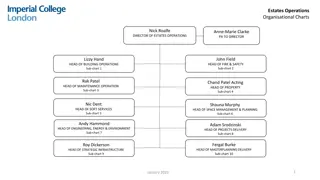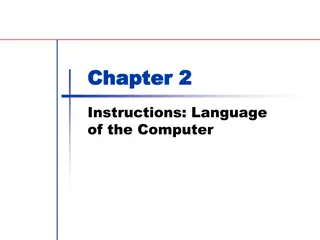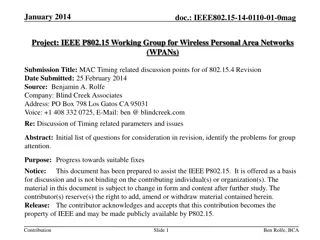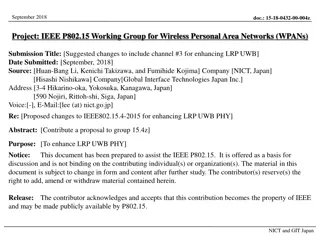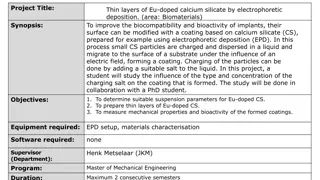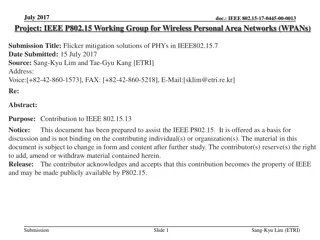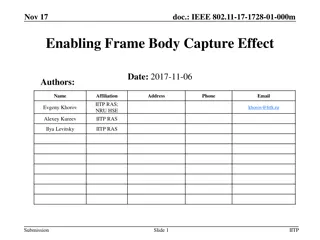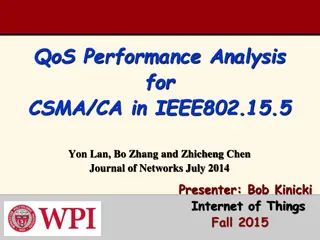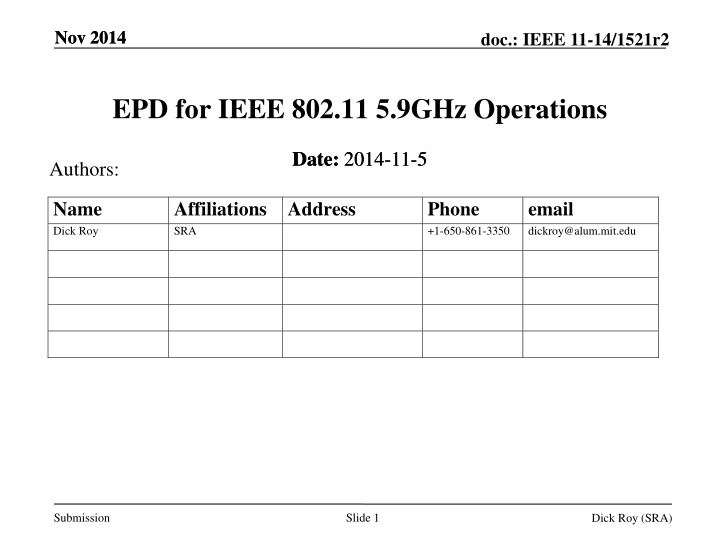
Switching to EtherType Protocol Discrimination in IEEE 802.11 for 5.9GHz Operations
Discover the rationale behind transitioning from LLC Protocol Discrimination to EtherType Protocol Discrimination in IEEE 802.11 for 5.9GHz operations. Learn about the background, incompatibilities of 802.2 and 802.3 protocols, the withdrawal of IEEE 802.2, and the advantages of using EtherTypes. Dive into the details of Ethernet dominance in LAN markets and the evolution of IEEE standards to support protocol discrimination using EPD.
Download Presentation

Please find below an Image/Link to download the presentation.
The content on the website is provided AS IS for your information and personal use only. It may not be sold, licensed, or shared on other websites without obtaining consent from the author. If you encounter any issues during the download, it is possible that the publisher has removed the file from their server.
You are allowed to download the files provided on this website for personal or commercial use, subject to the condition that they are used lawfully. All files are the property of their respective owners.
The content on the website is provided AS IS for your information and personal use only. It may not be sold, licensed, or shared on other websites without obtaining consent from the author.
E N D
Presentation Transcript
Nov 2014 Nov 2014 doc.: IEEE 11-14/1521r2 EPD for IEEE 802.11 5.9GHz Operations Date: 2014-11-5 Date: 2014-11-5 Authors: Name Dick Roy Affiliations Address SRA Phone +1-650-861-3350 email dickroy@alum.mit.edu Submission Slide 1 Dick Roy (SRA)
Nov 2014 doc.: IEEE 11-14/1521r2 Abstract Background Rationale for switching from LLC Protocol Discrimination (LPD) to EtherType Protocol Discrimination (EPD) in the IEEE 802.11 5.9 GHz bands Current status of implementations and support Submission Slide 2 Dick Roy (SRA)
Nov 2014 doc.: IEEE 11-14/1521r2 Background From their inception, 802.2 (LLC) and 802.3 (L/T aka Ethernet) have been and continue to be incompatible layer-2 (LLC-sublayer) protocols. Somewhere between 1999 and 2007, IEEE 802.11 specifically designated LLC (as defined in 802.2) as the Logical Link Control sublayer protocol to be used in all 802.11 STAs. Ethernet now dominates the LAN market (FDDI and Token Ring are disappearing) Submission Slide 3 Dick Roy (SRA)
Nov 2014 doc.: IEEE 11-14/1521r2 Background IEEE 802.2 was withdrawn in 2011 and is no longer supported by IEEE (ISO maintains a stabilized version in ISO/IEC 8802-2:1998) IEEE 802-2014 Overview and Architecture explicitly discourages the use of 802.2 LLC in the future. New IEEE 802 standards shall support protocol discrimination in the LLC sublayer using EPD. Submission Slide 4 Dick Roy (SRA)
Nov 2014 doc.: IEEE 11-14/1521r2 Background The use of EtherTypes instead of DSAP/SSAP addresses as network layer protocol identifiers means LLC SNAP/RFC1042 has to be used (cf. IEEE 802.11) As a consequence, six (6) octets of fixed content (and therefore useless) are transmitted in every over-the-air stream. Submission Slide 5 Dick Roy (SRA)
Nov 2014 doc.: IEEE 11-14/1521r2 Background LLC-sublayer 802.2 (LPD) header format (LLC SNAP RFC1042) 1 1 1 3 2 DSAP= 0xAA SSAP= 0xAA Control = 0x03 Protocol ID= 0x000000 Ethertype SNAP header LLC header Length/Type encoding (EPD) header format 2 Length < 1503 (0x05DF) Ethertype > 1535 (0x05FF) Length / Ethertype LT header Submission Slide 6 Dick Roy (SRA)
doc.: IEEE 11-14/1521r2 Nov 2014 Background IEEE 802.11 TGp created the amendment to IEEE 802.11 for operations in the 5.850-5.925 GHz frequency bands currently allocated by the FCC to Intelligent Transport Systems (ITS) operations Operations in these bands are outside the context of a BSS (dot11OCBActivated is true in 5.9 GHz bands in the US and Europe (see IEEE Std 802.11 Annex E)) Submission Slide 7 Dick Roy (SRA)
doc.: IEEE 11-14/1521r2 Nov 2014 Rationale There are currently no commercial deployments of IEEE 802.11 5.9 GHz units/systems (only prototype units in trials); hence the 5.9 GHz MAC/PHY can be considered to be new . Therefore, EPD should be used because it is: more efficient (6 bytes saved in every data frame) compatible with 802.3 ethernet LANs and 802.1Q bridges compatible with GLK (EPD) operation (when standardization is complete) IEEE 802-2014 mandates it! Submission Slide 8 Dick Roy (SRA)
doc.: IEEE 11-14/1521r2 Nov 2014 Rationale There are ongoing discussions on and investigations into possible sharing of some part of the ITS 5.9 GHz frequency bands (cf. UNII-4 in FCC NPRM 13-22) Changing from LPD to EPD for ITS communications in the ITS bands would neither impact nor be impacted by possible sharing with other IEEE 802.11 devices should such sharing eventually be allowed The ONLY change is to the contents of the LLC sublayer Protocol Data Unit (LPDU aka MSDU) Submission Slide 9 Dick Roy (SRA)
Nov 2014 doc.: IEEE 11-14/1521r2 Current Implementations 4 vendors of 5.9 GHz (11p) radio units have made and successfully tested the change (< 2 man-hours of effort) Q-Free Commsignia Savari Networks Arada Systems Submission Slide 10 Dick Roy (SRA)
Nov 2014 doc.: IEEE 11-14/1521r2 Current Implementations - LPD (before) Submission Slide 11 Dick Roy (SRA)
Nov 2014 doc.: IEEE 11-14/1521r2 Current Implementations - EPD (after) Submission Slide 12 Dick Roy (SRA)
Nov 2014 doc.: IEEE 11-14/1521r2 Current Support Several other vendors have indicated support for the change In October 2014, TC 204 passed the following resolution: Resolution 1072: ISO/TC 204 resolves to support a change from LPD to EPD in the 802.11 specifications for 5.9 GHz frequency bands. APPROVED Submission Slide 13 Dick Roy (SRA)
Nov 2014 doc.: IEEE 11-14/1521r2 Straw Poll Do you support a change from LPD to EPD for ITS communications in the IEEE 802.11 5.9GHz ( 11p ) frequency bands? YES: 20 NO: 0 NEED MORE INFORMATION/TIME: 37 ABSTAIN: 1 Submission Slide 14 Dick Roy (SRA)







